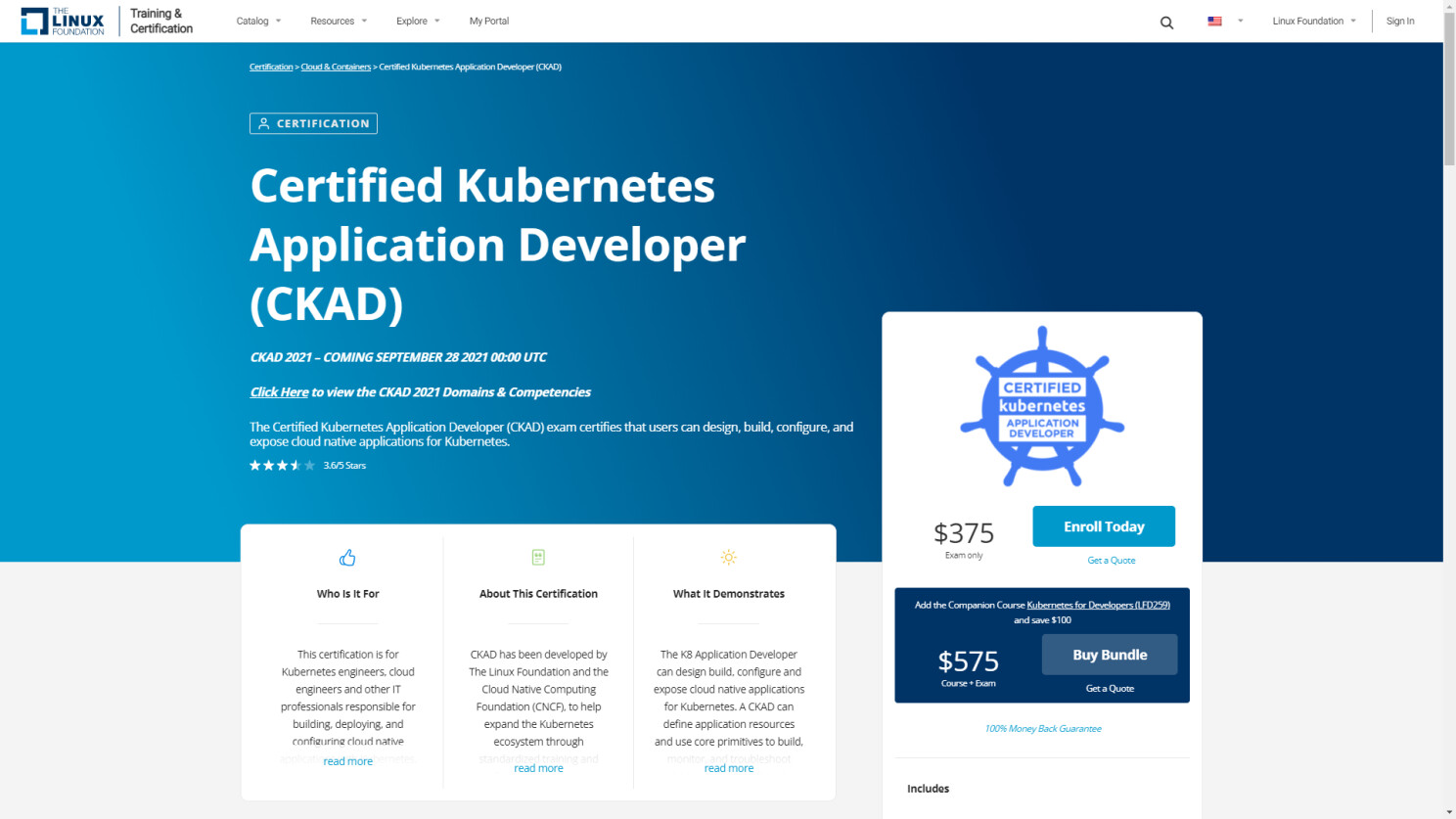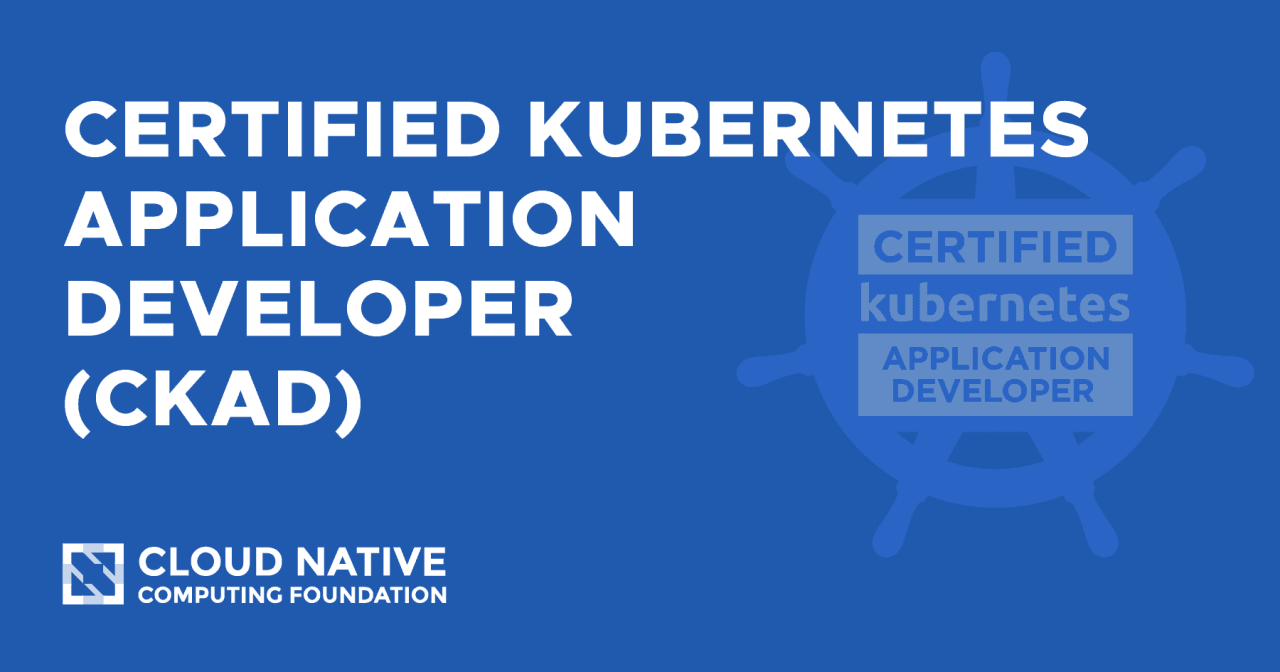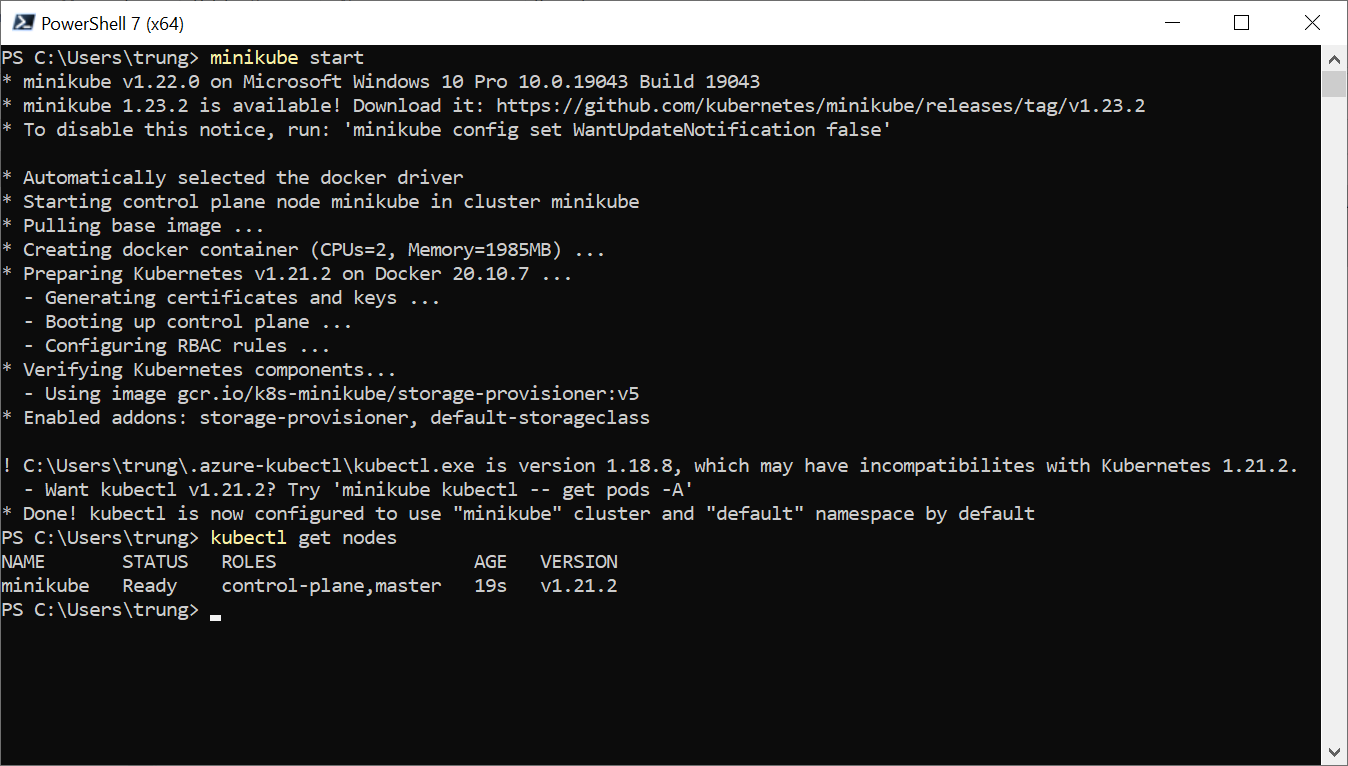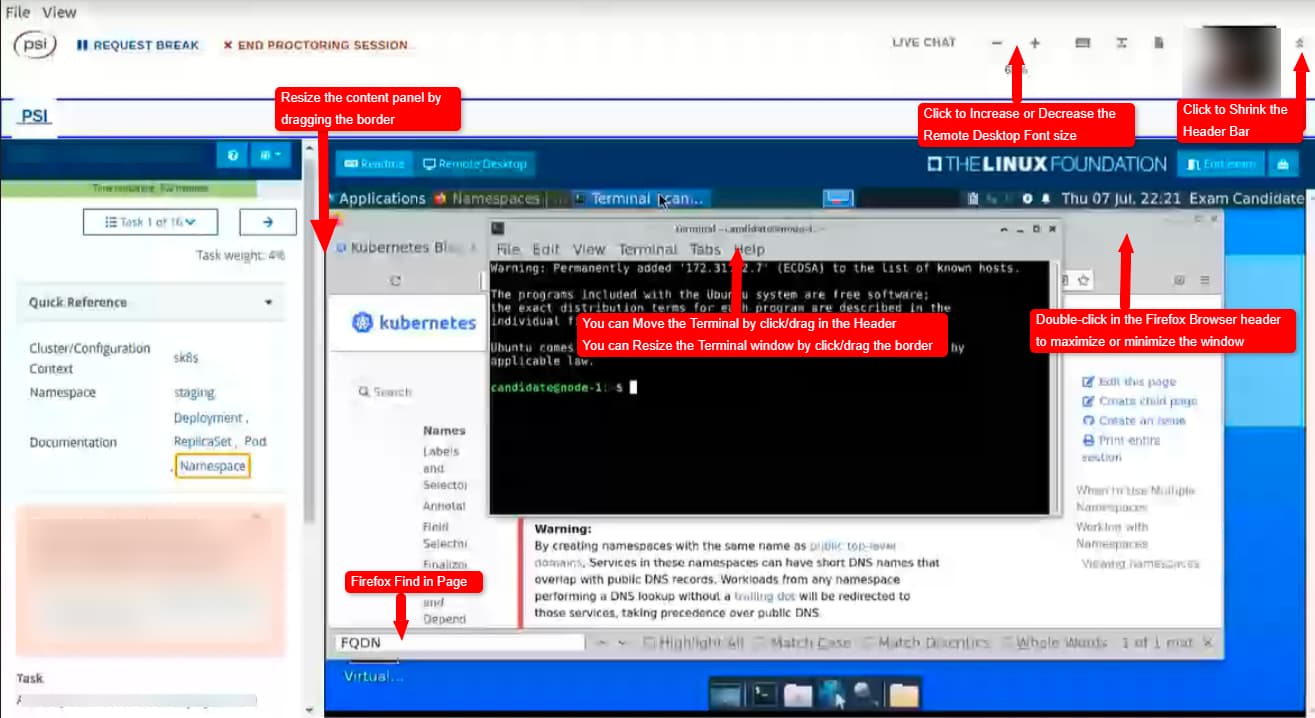The Certified Kubernetes Application Developer (CKAD) exam certifies that candidates can design, build and deploy cloud-native applications for Kubernetes.
I passed the CKAD exam with a score of 84/100 after a month of preparation. As I learned a lot, and also struggle a lot while preparing for this exam. I decided to write out my own experiences with this one here. And hopefully, it may provide some help on your CKAD journey.
1. What to know about the exam?
The key points to highlight about the exam:
- Mode: online proctored exam (via PSI Bridge platform), you will take the exam on a new web browser (PSI Bridge Secure Browser). Check the below URL from LF for more information.
Update on Certification Exam Proctoring Migration - Linux Foundation - Training - Duration: 2 hours.
- Format: performance-based test, which means NO single or multiple choice questions here, you have to write codes/commands to solve the pre-defined problems (from 17-20). If you already passed Azure, AWS, or GCP certifications before, this one will be different.
- Fee: the cost is $375 and includes one free retake so you have 2 chances (valid 1 year from the paid date).
- The minimum score to pass is 66, there are about 17-20 problems to solve weighted differently. You don’t need to solve them all, just enough to reach the target point.
The Cloud Native Computing Foundation has a clear description of this exam here, you should check it out if you haven’t Certified Kubernetes Application Developer (CKAD) | Cloud Native Computing Foundation for the details information. You can also buy the exam slot at the same link.
The FAQ related to this exam can be found here:
- Frequently Asked Questions: CKA and CKAD & CKS - T&C DOCS (Candidate Facing Resources).
- GitHub - kodekloudhub/community-faq
2. Learning path.
It will be easier if you already had some hands-on experience with K8S or Docker, but not a MUST. There are no prerequisites for this journey, if you want to learn K8S or your current job needs this skill, just DO it. I started this journey with a few keywords from my company workshop, so don’t be afraid if you don’t know anything about K8S before, you will MAKE it.
Find the training materials:
There are a ton of K8S learning materials that can be found on the internet, I used the followings items to crack the exams:
- Certified Kubernetes Application Developer (CKAD) course from KodeKloud included video courses, labs to practice the Kubernetes command, and mock exams.
- Book “Certified Kubernetes Application Developer (CKAD) Study Guide” by Benjamin Muschko is good for reviewing the concepts and practicing the sample exercises.
- Practice more CKAD exercises here by Dimitrios Ilias Gkanatsios. I repeat the tasks at least 3 times during my preparation time.
For the book exercises & the CKAD exercises by Gkanatsios, you need to provision your K8S cluster to practice. You can either provision a cluster on a public cloud provider (GKE, AKS, EKS) if you’re familiar with them or use some local options. For me, I used minikube on my Windows 10 laptop and it worked just fine (follow this guide to set up & start minikube start | minikube).
From my own experience, if you spend around 2 - 3 hours per day learning & practicing, you can crack this CKAD exam within a month.
3. Exam readiness checklist & tips.
Be patient, learning is a journey so we need to enjoy it, learn new topics from the online course every day, practice & repeat. As mentioned before, this is a performance-based test so “PRACTICE” is the key, the more tasks/exercises you did in the preparation time, the higher score you will get in the real exam.
Make sure you’re familiar with all curriculums of the CKAD exam below:
https://github.com/cncf/curriculum/blob/master/CKAD_Curriculum_v1.26.pdf
If you’re Linux guys, it should be fine, but if your main OS is Windows so you need to spend time learning some basic commands to apply in this exam ( curl & wget for service testing, vim to manipulate YAML files, cat to view files, how to create a file or copy a file with > or >> …) make sure you’re familiar with them before seating to the exam.
The cost for this exam is 375$, but the discount coupon is available often, follow the Linux Foundation page for the updates or check this page: Kubernetes Certification Coupon: 25% Off + $210 Bundle Offer. I saved 93.75$ for this exam by applying the DEVOPS25 coupon code, 50% off is also available annually around December (black Friday).
You have 2 practice sessions that come along with the CKAD package, check your training portal after buying the exam. They will give you 2 mock-test to practice on https://killer.sh/, which gives you a closer look at the real exam, don’t forget to practice on it before the exam date.
![]() As this is a time-constraint exam, the below tips can help you have more time to do the tasks:
As this is a time-constraint exam, the below tips can help you have more time to do the tasks:
- Use alias k=‘kubectl’ so you can write the K8S command with just " k run my-pod --image=nginx" instead of " kubectl run my-pod --image=nginx" .
- Use short resource names instead of full-name, like po for pod, netpol for networkpolicy, ing for ingress… It will help to save time and reduce typo mistakes. Run this command for the complete list: " kubectl api-resources ".
- Use kubectl explain {resource_name} --recursive | less to get the schema of any K8S resource, copy the needed part & paste it into the YAML file.
- Use the –dry-run=client -o yaml , do not write the YAML from scratch, always use – dry-run flag or copy YAML from Kubernetes Documentation | Kubernetes sites.
- Use –grace-period=0 --force flag when deleting pod , it will save 30 seconds of waiting time.
- Custom/personal bookmark is no longer accepted as you will take the exam via an RDP Linux machine on PSI Bridge Secure Browser
4. What to expect on the exam date?
Access the https://trainingportal.linuxfoundation.org/ portal on your exam date (you need to manually schedule before), the exam will open 30 minutes before the scheduled time.
The online proctor will walk you through the check-in steps (ID check, room check, device check…) before allowing you to start your exam session. You need to share your webcam, mic so makes sure you have a good internet connection.
After the exam is launched, you will have 2 hours to complete around 17-20 problems that randomly cover K8S objects like pod , node , networkpolicy , service , replicaset , deployment , namespace , job , cronjob, configmap, secret, env, volumes, liveness, readiness …
Strategy:
- Being well in time management, if there is a problem that you can’t solve, move to the next one, don’t waste your time, you don’t need to solve all problems to pass the exam, focus on the high-score problems & doable problem. There is a timer on the top-left corner, use it to keep track of your remaining time.
- Take note, the exam screen has a built-in notepad, use it to note during the exam (solved problems, what needs to review later, total collected points…).
- Be careful with namespace & context, if you solve the problem in the wrong namespace or wrong context, this will not be counted. I did make a mistake in the practice test that I used the kubectl config set-context --current --namespace={sample_namespace} to solve a problem, then forgot to reset on the next one, so even though I solve all problems, I still failed (luckily it just the mock test).
- I have not faced any issues during the exam, but if it happens to you, be patient, chat with your proctor and ask for instructions.
5. Grading & result
You will receive a confirmation from linuxfoundation.org via email in your mailbox after you finish the exam.
Within 24 hours, you will receive the result from linuxfoundation.org via email too. If the email title is ‘’ Certified Kubernetes Application Developer (CKAD)’ certificate granted! ", you PASSED!, go to the learning portal to get the e-certificate and score. If you do not make it for the first time, don’t worry, practice more, and try again with a free retake.
Thank you for your reading! Happy learning!




